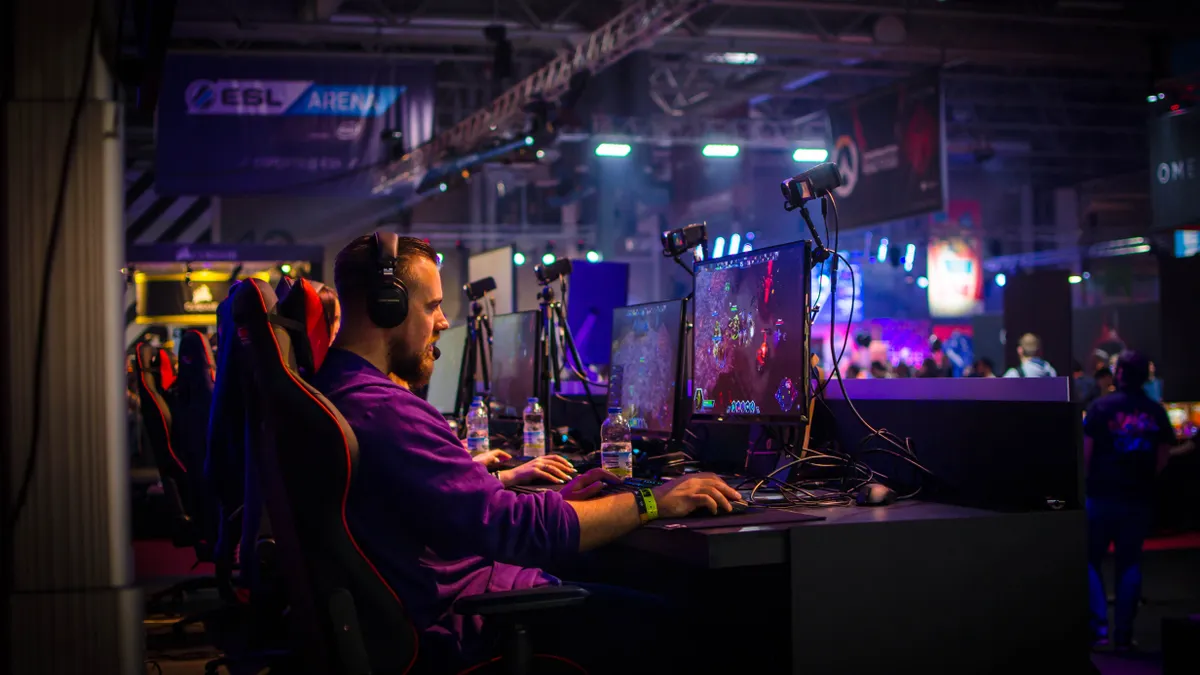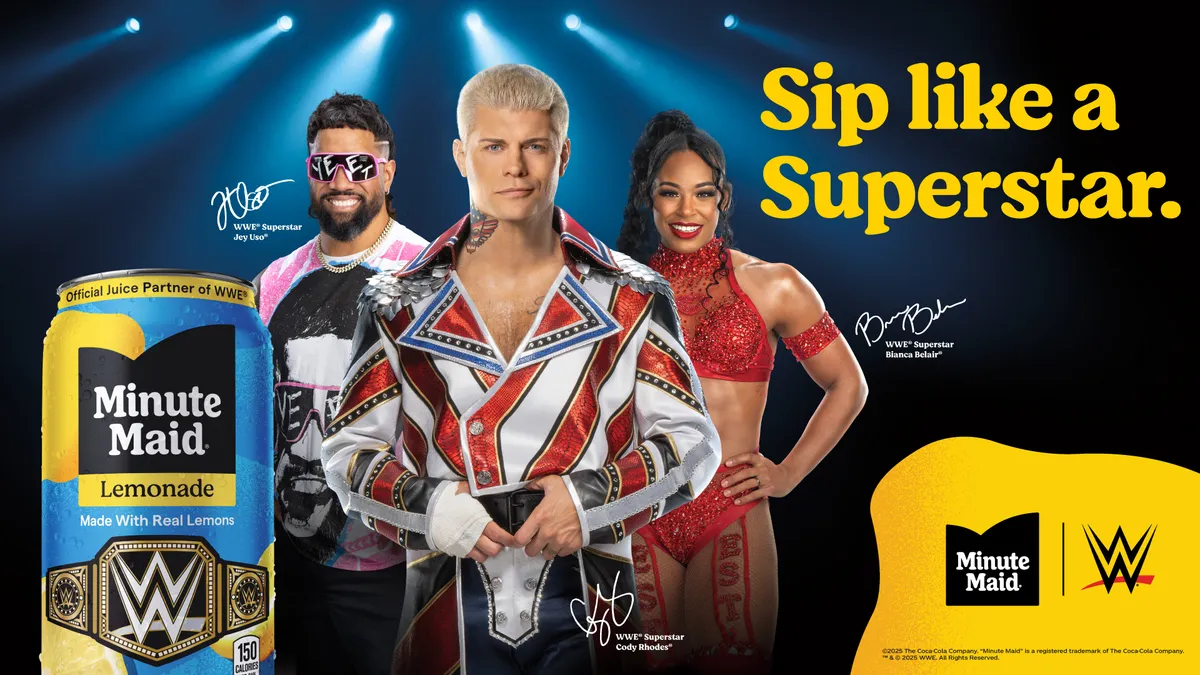In the early days of sports marketing, there were multimillion dollar TV spots during the Super Bowl. Then came a collage of logos decorating race cars during the Formula 1, followed by the introduction of ad space on NHL and soccer jerseys. Marketing through esports, however, may represent a new game entirely for brands.
The total esports audience will reach 380 million this year — a growth rate of 14% year-over-year, according to NJ Games, a consultancy that tracks data on the subject. Viewership, meanwhile, has jumped from 205 million to 335 million between 2015-2017, and NJ Games predicts it will reach 557 million by 2021, with a demographic split 62% men and 38% women, with more than half between 21 and 35 years old.
That audience might seem like a natural fit for advertisers who make consoles and other hardware, but the potential opportunity for brands extends far beyond the consumer electronics space, according to David Pucik, VP of games and digital strategy at research firm Magid. The question is whether they'll move quickly enough.
"The window for non-endemic brands to enter the space and get a strategic advantage is closing."

David Pucik
VP, games and digital strategy, Magid
"The window for non-endemic brands to enter the space and get a strategic advantage is closing," he said. "Video game brands have known this for years, that this is a highly educated audience, and so now other brands have to ask themselves, 'Am I willing to give up the mental white space that exists here?'"
Shannon Simpson Jones, co-founder at agency Verb, warned against slapping down logos within an esports environment, whether via online pop-ups or at a tournament.
"The brands that have a consistent sustained presence in this space are the ones that win," she said. "If you do a one-off at an event, they might not see a ton of impact, but if this audience sees a brand pop up in multiple places it becomes a long-term opportunity to create those relationships and the awareness they want."
Brands getting their game on
The interest in esports from brands is reflected in growing ad revenue, which eMarketer predicts will increase 25% this year and exceed $200 million by 2020.
Examples of brands already establishing a foothold include State Farm, which recently finalized a deal via its agency ReKTGLobal to sponsor season two of the Universal Open Rocket League. In early March, Procter & Gamble's Gillette brand partnered with livestreaming video platform Twitch for the Gillette Gaming Alliance, a team of 11 streamers from different countries who will create content for the brand. A new campaign from Red Bull is part of a collaboration with professional gamer and Twitch star Tyler "Ninja" Blevins that includes limited-edition cans and a fan contest. Just last week, Unilever's Axe partnered with Eleague, a collaboration between Turner Sports and talent agency IMG, for esports marketing and custom content.
Beyond these brands, however, the world of esports might still seem a bit murky unless marketers are familiar with platforms like Twitch and YouTube Gaming or looked at some of the conversations on Twitter or Reddit.
"When you go to an esports event, it looks and sounds like a traditional sporting event, Comic-Con and a rock concert all at once," said Ken Olsen, director of strategic partnerships and activation, at rEvXP, an offshoot of agency rEvolution that focuses on esports for brands like Chipotle and Turtlewax. "A lot of brands are doing research on their own with pyschographics and key demographics, and they're finding that a lot of their fans or existing patrons are involved in gaming or interested in esports content. There's a natural conversation that can unfold on a daily basis with many of the bands."
Sponsorship doesn't have to be overly complicated to be authentic and effective. The High School Esports League (HSEL), which was formed in 2013 and runs events with 1,500 partner schools in all 50 states, works with brands like retail chain Tillys to develop both in-school and in-store engagements. Tillys created a box with T-shirts and other products for organizers of games, for instance, and will launch an in-store event at the end of April where players can shoot down "unfashionable" zombies.
"The catch-all solution is collaboration and setting expectations up front," said Steve Jaworski, general manager of HSEL.
In search of esports' Michael Jordans
We may also see the day when esports teams or star athletes achieve a level of renown that becomes as attractive to advertisers as Michael Jordan or the New York Yankees, suggested Josh Spiegelman, managing director at WPP's Mindshare agency.
"Most esports teams are providing brands the opportunity to bundle talent into larger sponsorship deals. That is because they want to incentivize brands to activate partnerships. Imagine a deal with Red Sox that allows you to hero Big Papi," he said, referring to David Ortiz.
Compared with sponsoring a local team in a city or a state, meanwhile, esports teams often capture fans across an entire country, Spiegelman said.
"What's fantastic about esports constructs is that marketers can leverage that intellectual property on a national basis," he said. "Conversely, when you're talking about stick and ball sports, you're usually confined to the geographic radius and how you activate within those team markets. Esports is hugely scaleable."
Besides team sponsorship, of course, esports athletes might be appealing to marketers for individual deals based on the strength of their personal brands. As Spielgelman notes, these are among the first athletes to have grown up on social media.
"There are inherent risks to working with someone that's streaming content 15 hours at a time."

Ken Olsen
Director, of strategic partnerships and activation, rEvXP
"They are incredibly savvy on how to communicate with their fans in ways that athletes in traditional sports are not," he said. "It's incumbent on marketers to ensure they're active with them to maximize the potential brand reach."
REvXP has done this, in some cases working with esports stars to create content on a client's behalf. As with any kind of influencer marketing, there's a delicate balance to strike between giving such creators room to express themselves while aligning with an advertiser's image and values.
"There are inherent risks to working with someone that's streaming content 15 hours at a time. Maybe someone will say something off-color. There needs to be a certain amount of trust," Olsen said. "It's difficult to communicate that to certain brands."
Pucik agreed. "The question a lot of them are asking is, 'How do I approach this in a safe way for the audience?' It's a much safer space if you're not going to be daring," Pucik said. "That may not get you the return you want, which is a separate question."
While they're figuring out those answers, Spiegelman advised brands to start looking beyond the console or PC to mobile gaming, which may ultimately provide a way for those who haven't tried playing esports to do so in a more accessible way — and a way that might make the ad game even more interesting for marketers.






















